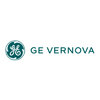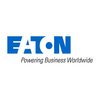Filter interviews by
LM Wind Power Technical Lead Interview Questions and Answers
LM Wind Power Technical Lead Interview Experiences
1 interview found
(1 Question)
- Q1. Bolt calculation, process questions, npd questions
Interview questions from similar companies


(2 Questions)
- Q1. Why do you want to be a TL?
- Q2. What do you know about SMART goals?
- Ans.
SMART goals are specific, measurable, achievable, relevant, and time-bound.
Specific: Goals should be clear and well-defined.
Measurable: Goals should have a way to track progress and measure success.
Achievable: Goals should be realistic and attainable.
Relevant: Goals should be aligned with overall objectives and relevant to the individual or team.
Time-bound: Goals should have a deadline or timeframe for completion.
Examp...


(6 Questions)
- Q1. What are your salary expectations?
- Q2. Share details of your previous job.
- Q3. Why should we hire you?
- Q4. Where do you see yourself in 5 years?
- Q5. Tell me about yourself.
- Q6. What are your strengths and weaknesses?

Interview Preparation Tips

I applied via Recruitment Consulltant and was interviewed in May 2022. There were 2 interview rounds.

(1 Question)
- Q1. Old experience, old works, skills and educations
Interview Preparation Tips
intresting game should be played once in a month

I applied via Recruitment Consulltant and was interviewed before Mar 2022. There were 3 interview rounds.

(1 Question)
- Q1. Background questions (education, work experience, projects, skills, interests, family) Some basic personality based questions e.g. strength, weakness,etc. why do you want to switch? Current and expected ...
(1 Question)
- Q1. Hiring manager will ask you role specific questions Prepare well as the questions can be real difficult Prepare both the theoretical as well as the practical aspects
Interview Preparation Tips
Focus on the foundations and stay updated on latest trends and technology

I applied via Company Website and was interviewed before Jun 2022. There were 3 interview rounds.

(1 Question)
- Q1. Introduction , previous experiences discussion, Codes and standards
(1 Question)
- Q1. Family background, present salary, salary expectation and final offer

I applied via Recruitment Consulltant and was interviewed in Aug 2023. There were 4 interview rounds.
(1 Question)
- Q1. 1. Question around Project management 2. How I handle clients 3. How I address risk
(1 Question)
- Q1. 1. Mostly managerial skills
(1 Question)
- Q1. 1. Discussion regarding salary etc.
(1 Question)
- Q1. Career plans, future prospects for me etc.

I applied via Naukri.com and was interviewed in Mar 2022. There were 4 interview rounds.

(1 Question)
- Q1. Logical and Experience level-wise question.
(1 Question)
- Q1. The interview was taken from higher management.
(1 Question)
- Q1. Salary discussion and any offer in hand or not.
Interview Preparation Tips

I applied via Approached by Company and was interviewed before Jan 2022. There were 2 interview rounds.

(2 Questions)
- Q1. There are HR as well as Technical round.
- Q2. It will be on the respective domain.
Interview Preparation Tips

I applied via Recruitment Consulltant and was interviewed before Jan 2024. There were 2 interview rounds.
(5 Questions)
- Q1. Application states and life cycle
- Q2. Higher order functions
- Q3. SOLID Principals
- Q4. Data Structure and Core Data
- Q5. Closure, Multithreading, ARC
Singleton, Struct, call by value, call by ref, inheritance
LM Wind Power Interview FAQs
Tell us how to improve this page.
LM Wind Power Interviews By Designations
- LM Wind Power Quality Engineer Interview Questions
- LM Wind Power Engineer Interview Questions
- LM Wind Power Technical Lead Interview Questions
- LM Wind Power Lead Engineer Interview Questions
- LM Wind Power Quality Inspector Interview Questions
- LM Wind Power Assistant Manager Interview Questions
- LM Wind Power Continuous Improvement - Manufacturing Interview Questions
- LM Wind Power Automation Test Engineer Interview Questions
- Show more
Interview Questions for Popular Designations
- Senior Technical Lead Interview Questions
- Technical Specialist Interview Questions
- Member Technical Staff Interview Questions
- Technical Analyst Interview Questions
- Technical Consultant Interview Questions
- Technical Architect Interview Questions
- Associate Technical Consultant Interview Questions
- Associate Technical Leader Interview Questions
- Show more
LM Wind Power Technical Lead Interview Process
based on 1 interview
Interview experience
Interview Questions from Similar Companies
Fast track your campus placements
LM Wind Power Technical Lead Reviews and Ratings
based on 1 review
Rating in categories
|
Production Operator
54
salaries
| ₹1.9 L/yr - ₹4.5 L/yr |
|
Quality Controller
53
salaries
| ₹1.8 L/yr - ₹5.5 L/yr |
|
Operator
30
salaries
| ₹1 L/yr - ₹4.3 L/yr |
|
Team Lead
29
salaries
| ₹2.5 L/yr - ₹6 L/yr |
|
Advanced Engineer
28
salaries
| ₹8.1 L/yr - ₹14 L/yr |

Suzlon Group

Vestas

Inox Wind

GE Vernova
- Home >
- Interviews >
- LM Wind Power Interview Questions >
- LM Wind Power Technical Lead Interview Questions




















